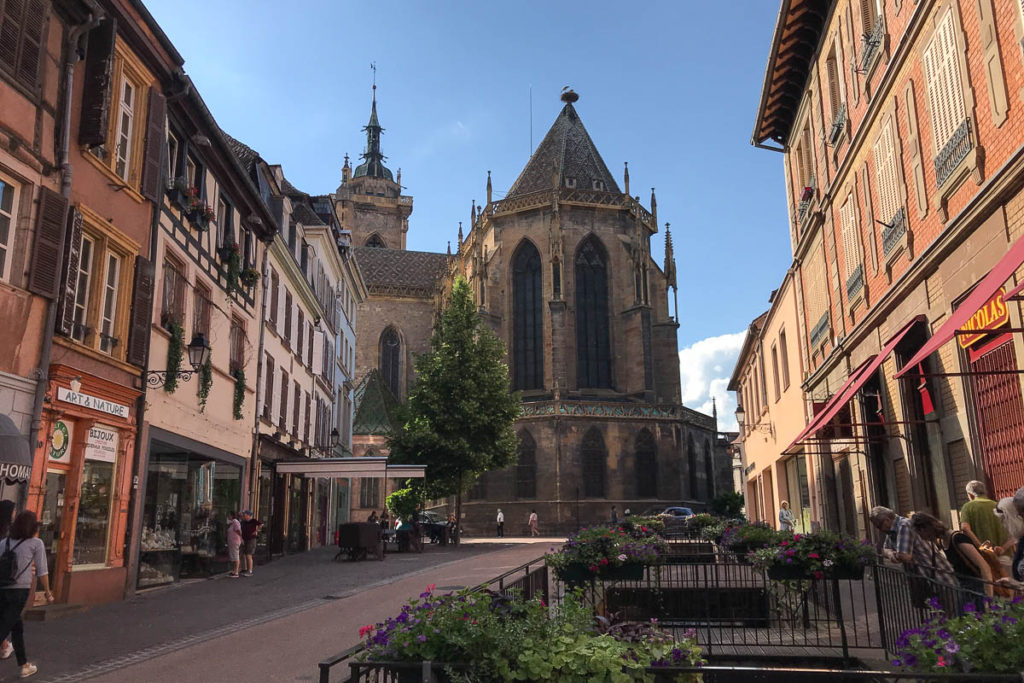
As mentioned in our last post on Burgundy and Dijon, we decided on Colmar as our base for exploring Alsace. This colorful, picturesque, fairyland city of cobblestone streets, half-timbered houses, and early Renaissance buildings was packed with tourists. Many more than when Ian was here twenty years ago. Despite the tourists, we enjoyed a very pleasant nine days in Colmar. Besides, before 9 am and after 7 pm, most of the tourists clear out, and the town becomes very peaceful.
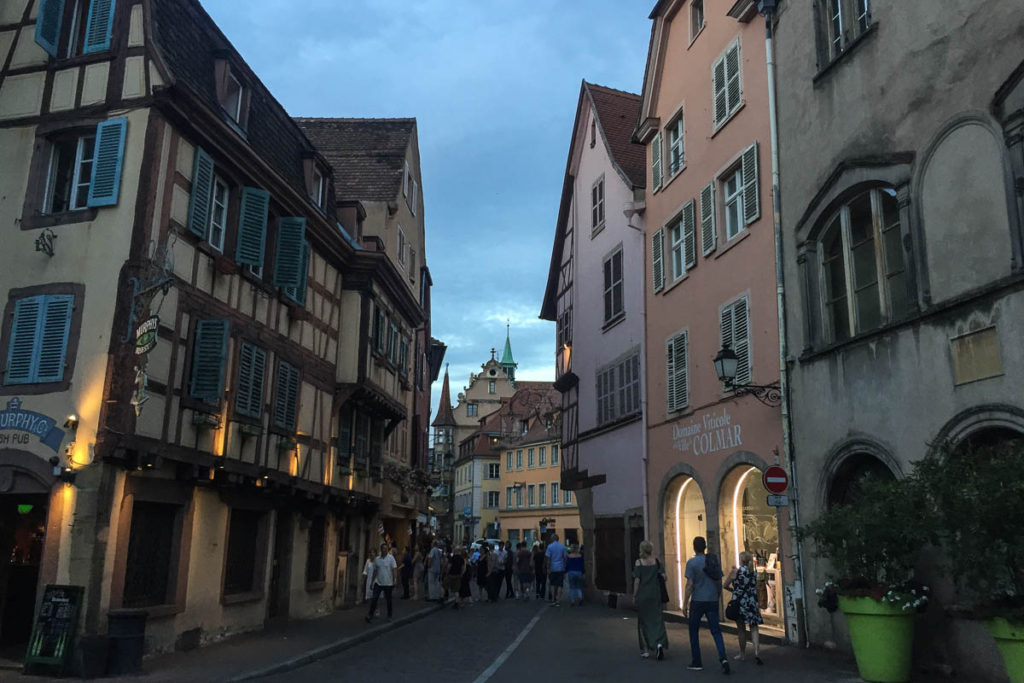
Our Airbnb Apartment in Colmar
Our apartment was right in the center of the Colmar’s historic district, yet relatively quiet except for the occasional music. How often do you get to stay in a typical Alsatian wooden framed house built in 1540?! The kitchen walls were covered with Carrara marble (not from the 16th century), and the charming bathroom hadn’t been remodeled since the 1930’s. The building also had a rooftop terrace with views over the city.
A Few of Colmar’s Historic Sights
Colmar certainly has its share of sightseeing, and we visited a few and simply wandered, as we often do, by others.
Musée Unterlinden
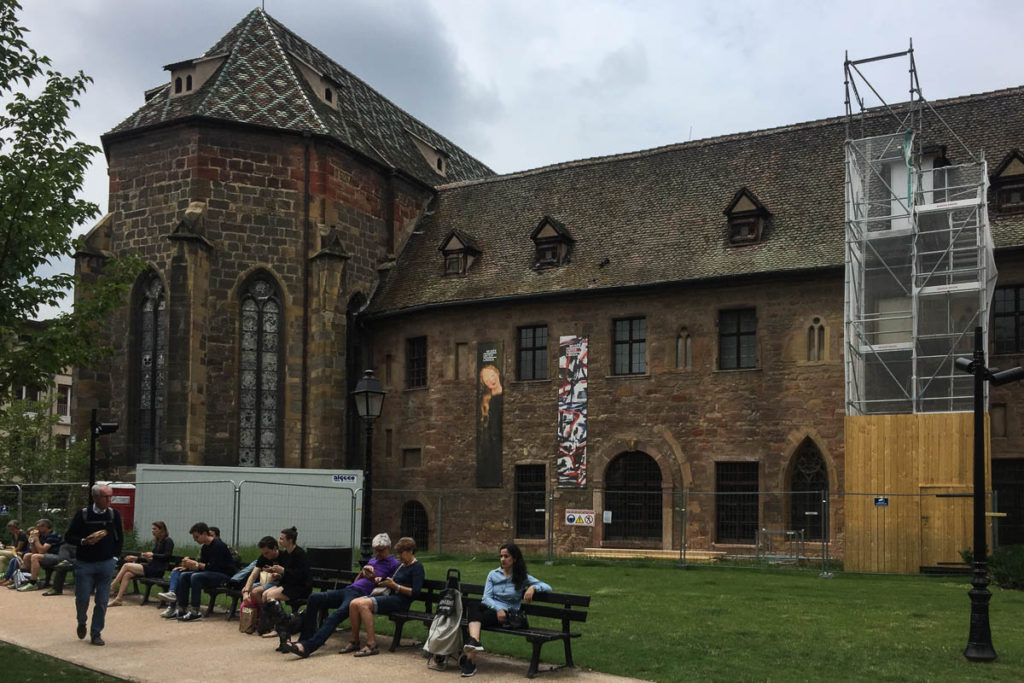
Possibly the most visited sight in Colmar is the Musée Unterlinden. This museum is best known for its Isenheim Altarpiece, a 500-year-old polyptych (a painting divided into sections or panels) by Matthias Grünewald and Niclaus of Hagenau. This former 13th-centuray Dominican convent also has an extensive collection of artifacts, a music room, a wine room, and a new contemporary wing with works by Picasso, Renoir, Monet, plus modern art.
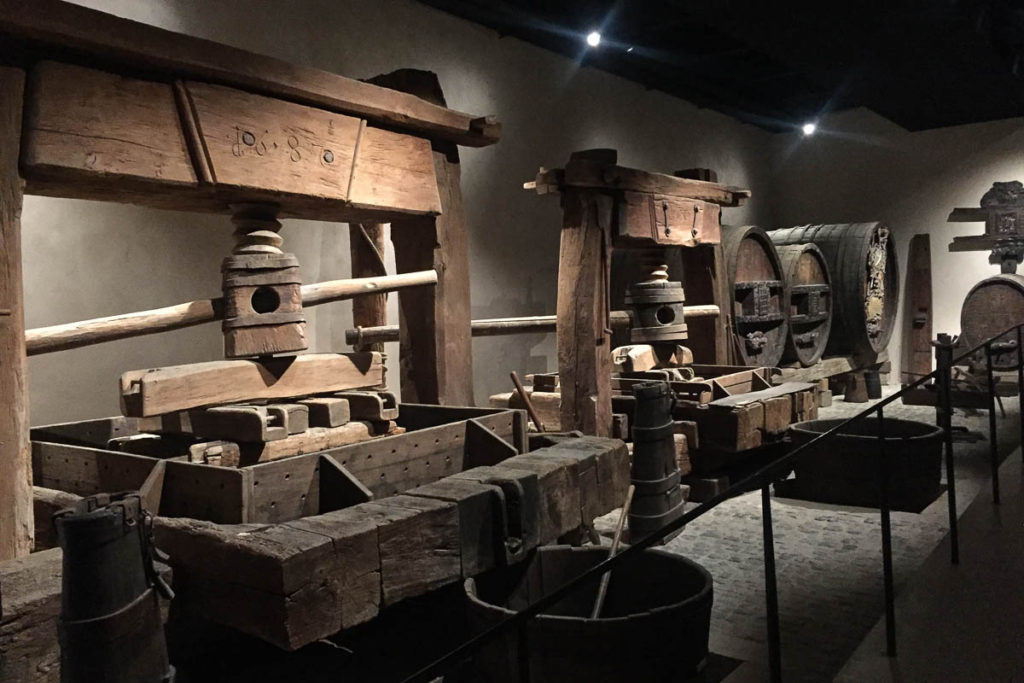
St. Martin’s Collegiate Church
Situated on the Place de la Cathédrale in the center of Colmar’s Old Town, this Gothic-style church was built between the 13th and 14th centuries. Although St. Martin’s Church became a cathedral only for about ten years during the French Revolution, it is still referred to as Colmar’s cathedral, perhaps because of its massive size. And the name of the square remains Place de la Cathédrale.
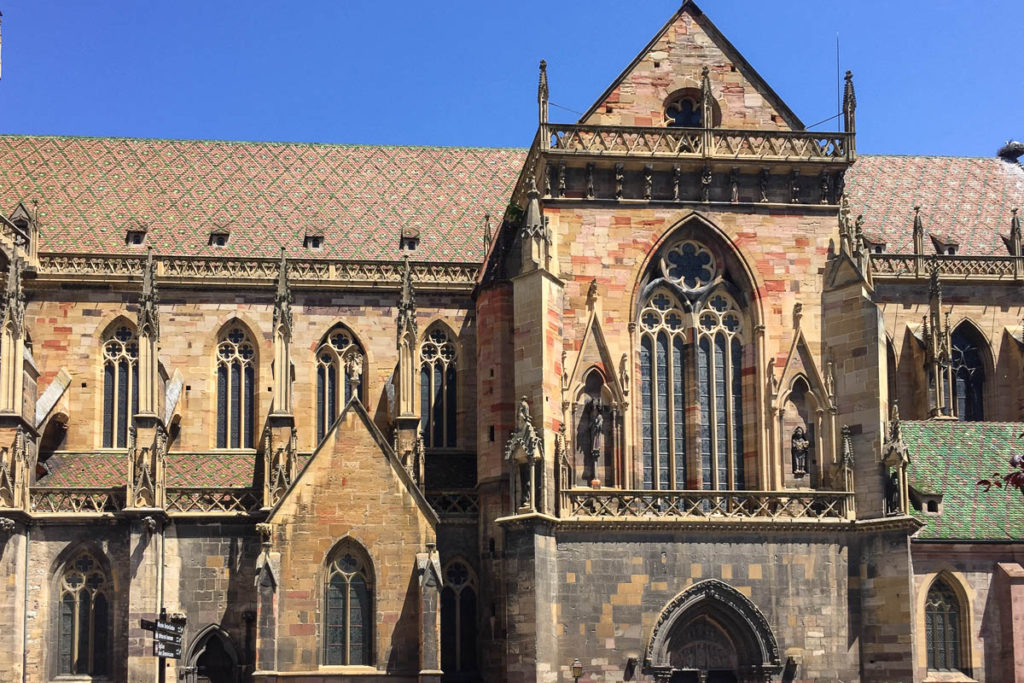
Dominican Church
Both churches were built about the same time. As would be expected of a church of the Dominican order, this church is much simpler, at least on the outside. The highlight of the church on the inside is La Vierge au Buisson de Roses (The Virgin of the Rosebush). This triptych was completed in 1473 by Martin Schongauer, an Alsatian engraver and painter.
Other Sights in Colmar
La Maison des Têtes, literal translation is “House of Heads”. This recently restored German renaissance palace has 106 carved stone heads on the outside. It was built for Anton Burger, a wealthy merchant who was also Colmar’s mayor at the start of the 17th century.
Apparently, it was not uncommon during the Alsatian renaissance for wealthy merchants to build elaborate and unusual large houses. Another example in Colmar is Maison Pfister, built in 1537, named for one of the many wealthy merchants and traders who owned it over the centuries. To the untrained architectural eye, this elaborate structure looks like a mishmash of styles.
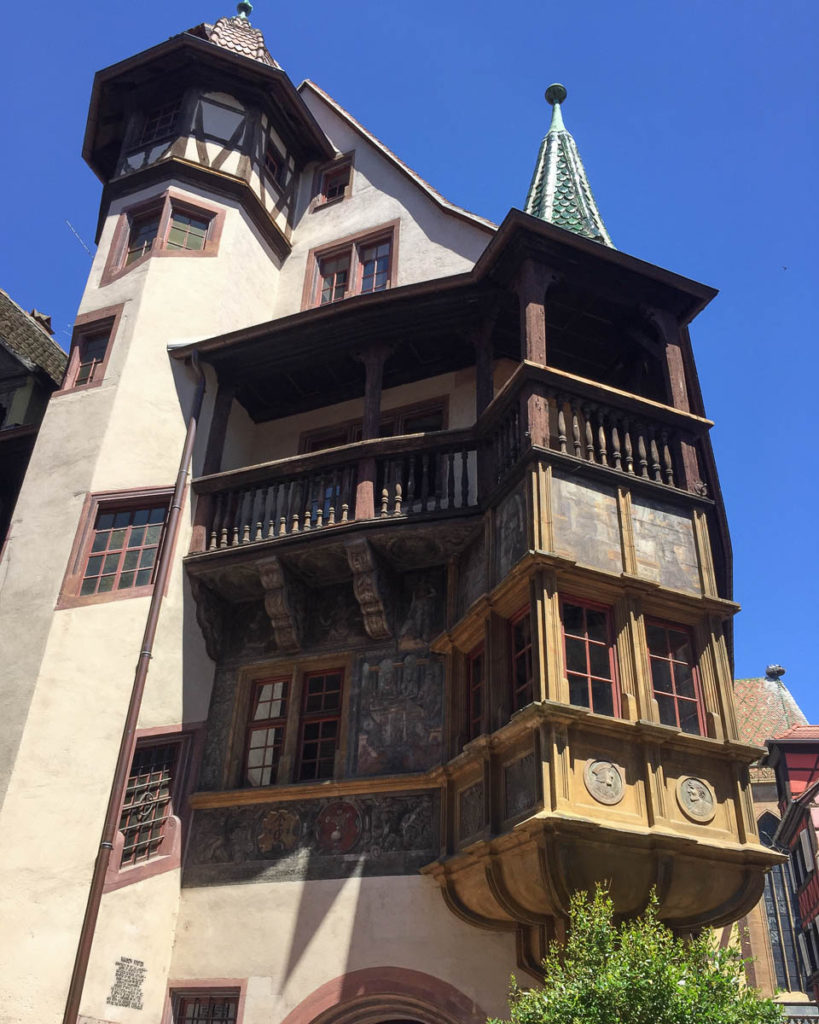
Not quite as elaborate is the Auguste Bartholdi Museum. This former home turned museum was the birthplace of Frédéric Auguste Bartholdi, the sculptor who created the Statue of Liberty. Colmar, as well as many cities around the world, has a duplicate of this, his most famous, sculpture.
The Old Market Hall was rather small and unimpressive to us, compared to others we’d visited throughout France, see here and here. But two days a week, an expanded market around the outside, was an enticing improvement.
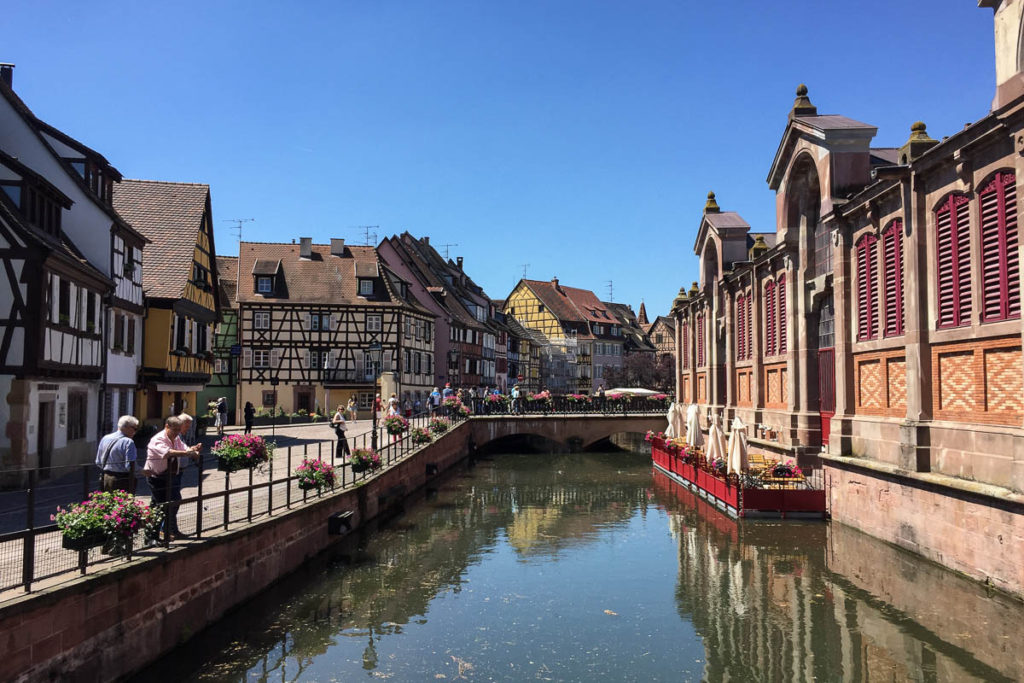
Petite Venise (Little Venice), just as the name suggests, is a charming part of town with a canal running through it.
Many of the streets throughout Colmar are still named for the various trades that thrived on those streets in earlier times. A few examples are Rue des Marchands (Merchants Street), Rue des Tanneurs (tanners), and Rue de la Poissonnerie (fish markets). Our home for nine days was on Rue des Serruriers (locksmiths).
Wine Tasting in Alsace
The main grapes of Alsace are Riesling, Pinot Gris, Muscat, and Gewurztraminer. Happily for us, winemakers make dry as well as sweet Rieslings, and also some Pinot Noir. Although we are big fans of Pinot Noir, we tended to prefer the dry Rieslings in this region.
In Colmar
We booked a tasting at Domaine Martin Jund, an organic winery. The price of 16 € each (a bit less than $18 USD) was supposed to include eight tastings and last about 75 minutes. Many more tastings and three hours later, we were a bit tipsy and very educated about Alsatian wines.
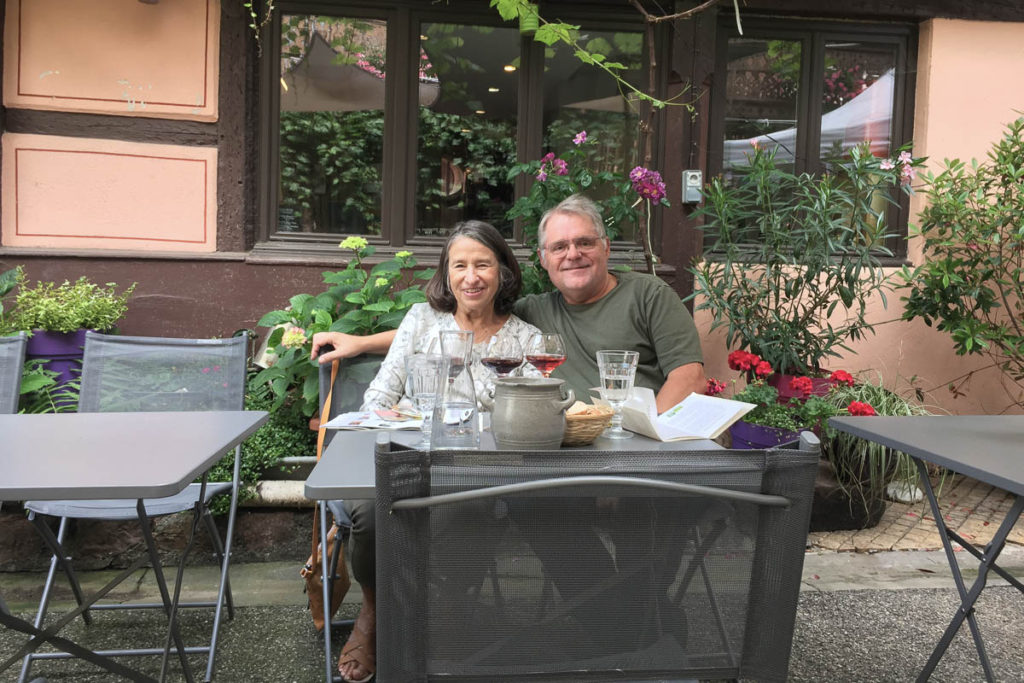
As we sat a table in a courtyard surrounded by plants and grapevines, the winemaker himself kept reappearing from inside with a new wine for us to taste. His choices were based not on a set menu but on our preferences and what he felt we should taste as part of our introduction to and education about Alsatian wines. We left with three bottles of wine: a Grand Cru Riesling, a Pinot Noir, and a Pinot Gris for a total of 33 €.
Route des Vins d’Alsace
The Alsace Wine Route runs north to south for about 170 km (105 mi) along the eastern foothills of the Vosges Mountains. Alsace has over 100 villages with vineyards, and about 65 are on this route, with over 300 wineries. The route with hiking and biking trails is also dotted with castles.
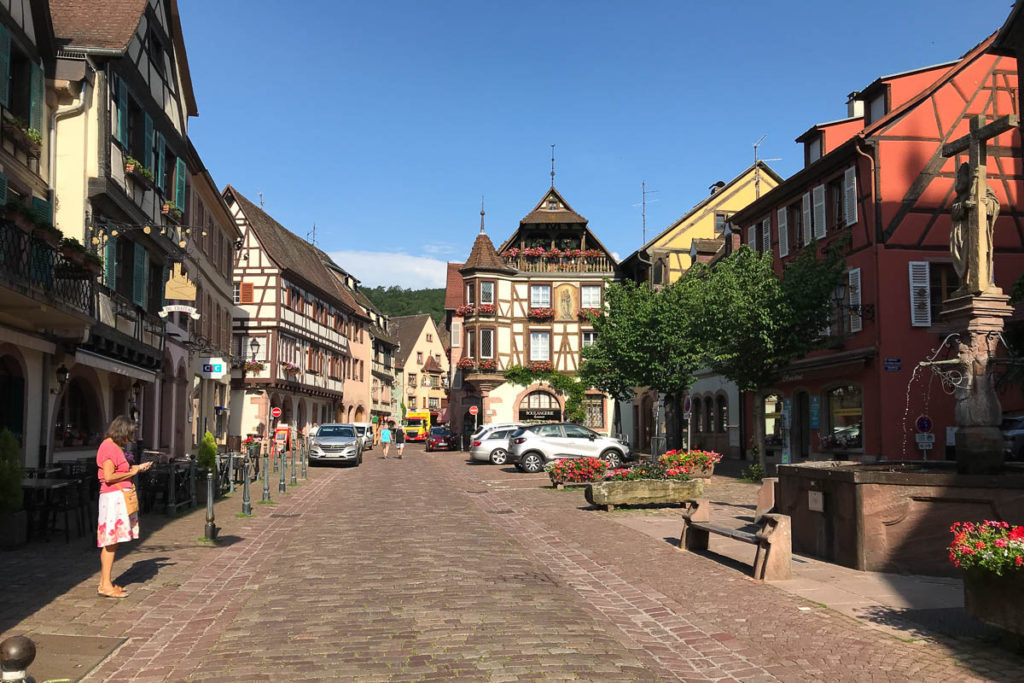
First Stop: Kaysersberg
Our day began with the bus from Colmar to Kaysersberg, one of the larger villages along the Alsace Wine Route. This trip took about 45 minutes. We found this town to be perhaps even more fairy-tale-like than Colmar, maybe because of its smaller size. We arrived quite early in the morning, as businesses were just getting ready to open for the day. Our early arrival allowed us to enjoy a peaceful walk around the medieval core (that had largely been converted into to souvenir shops) before the tourists arrived.
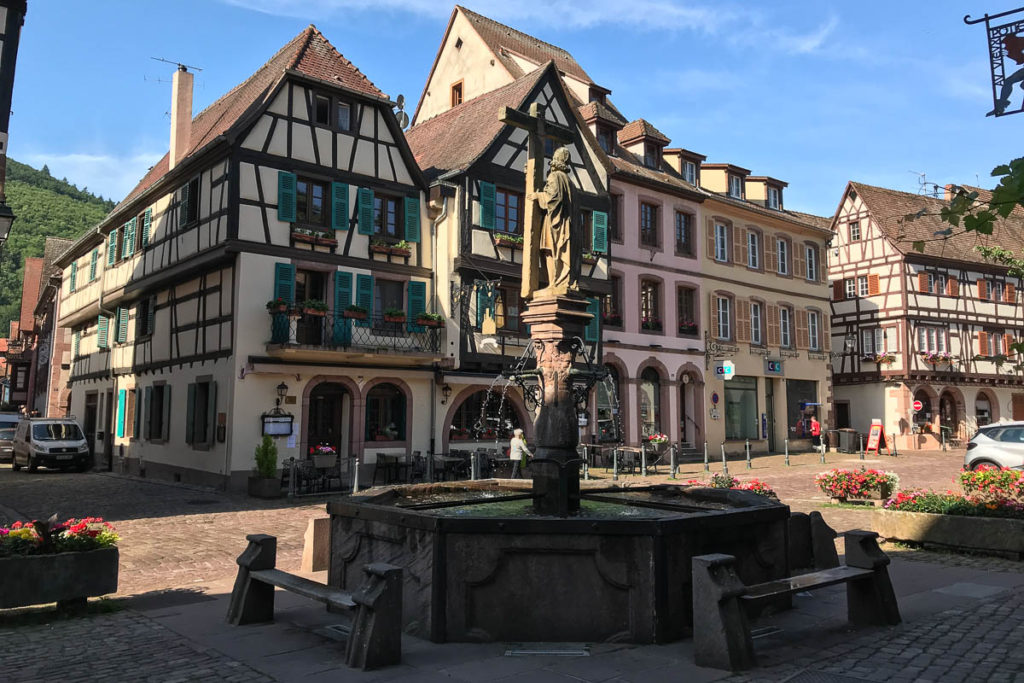
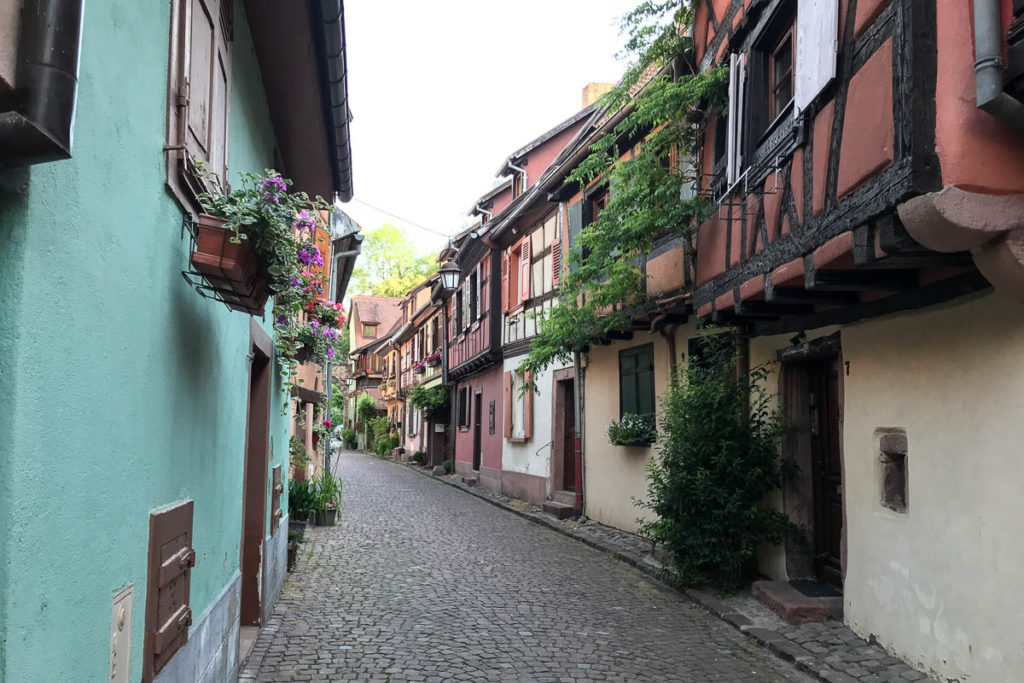
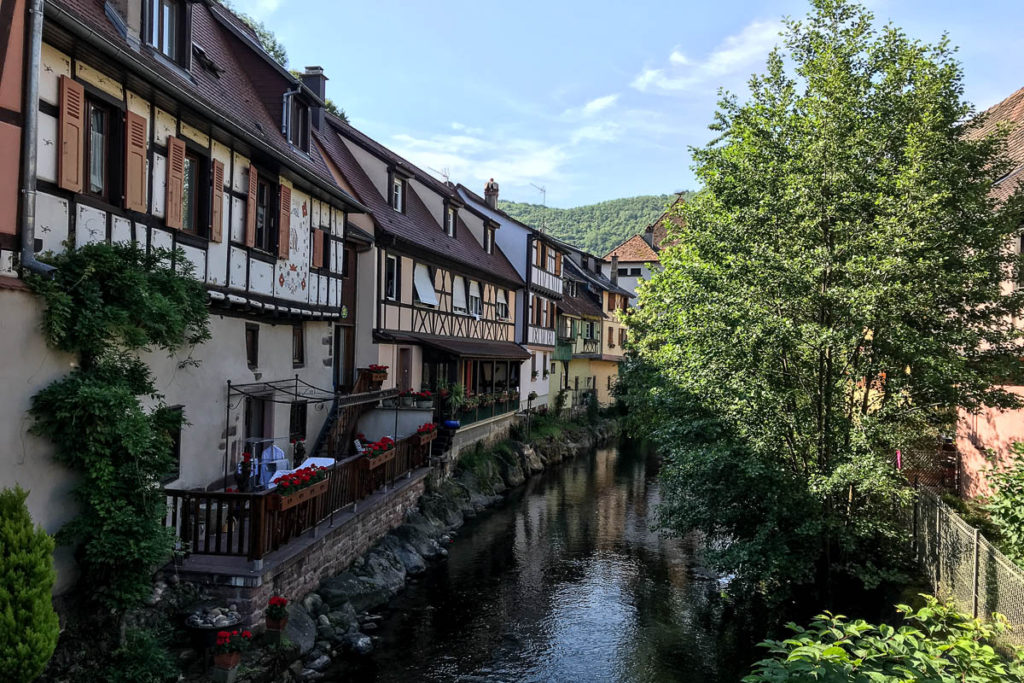
Next stop: Ammerschwihr
Heading out of town as if we were going to walk to Ammerschwihr on the road, we found the trail right before the sidewalk ends on the other side of the street.
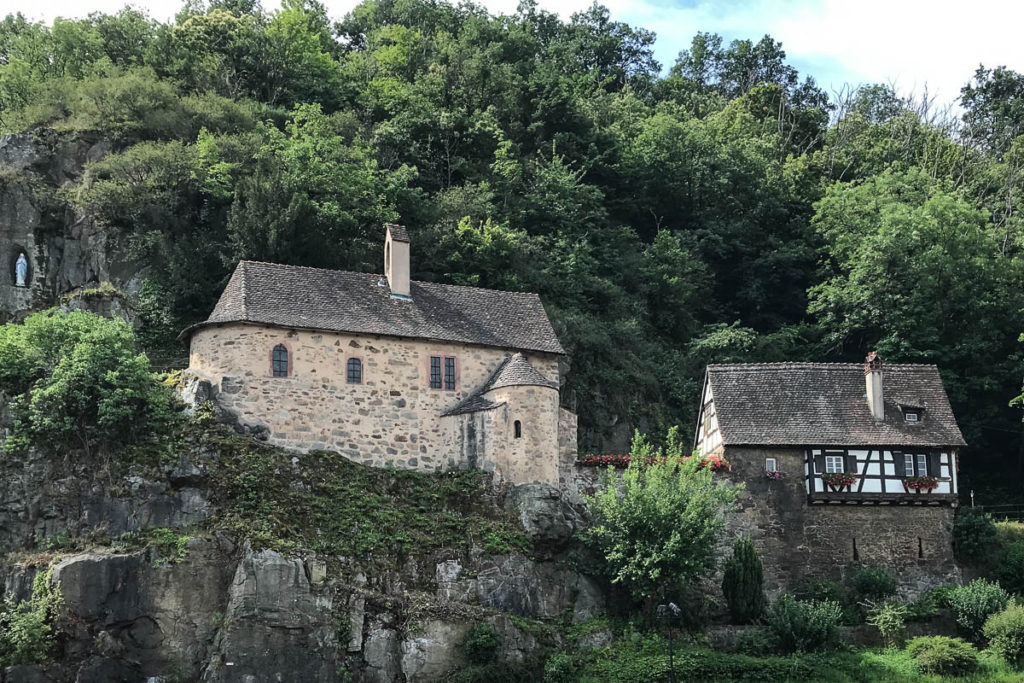
The trail rose slightly through the woods before descending through vineyards.
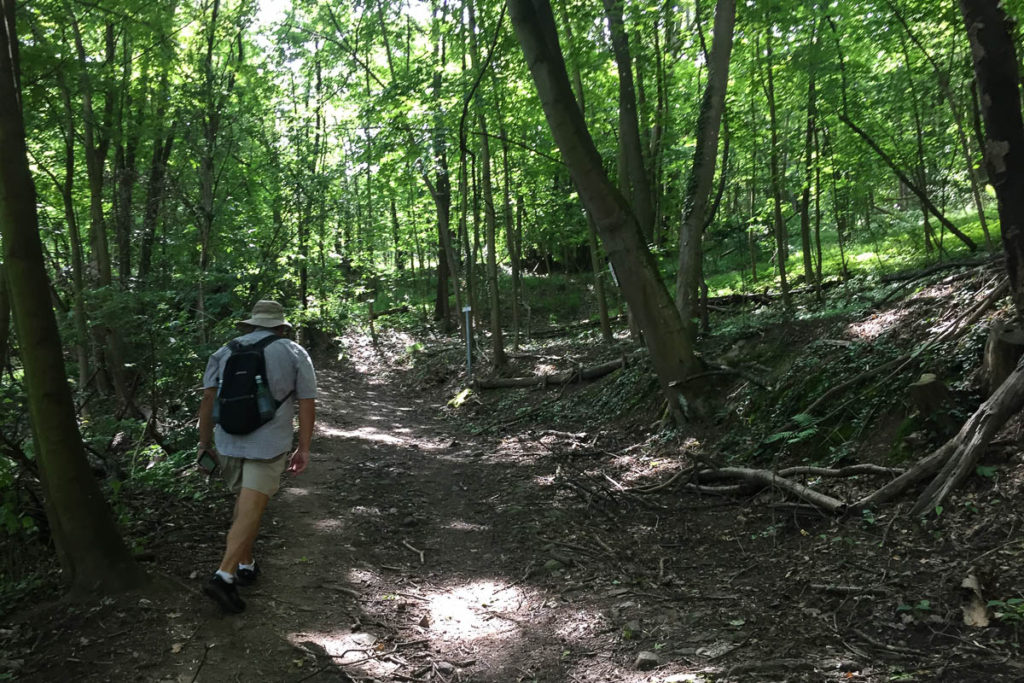
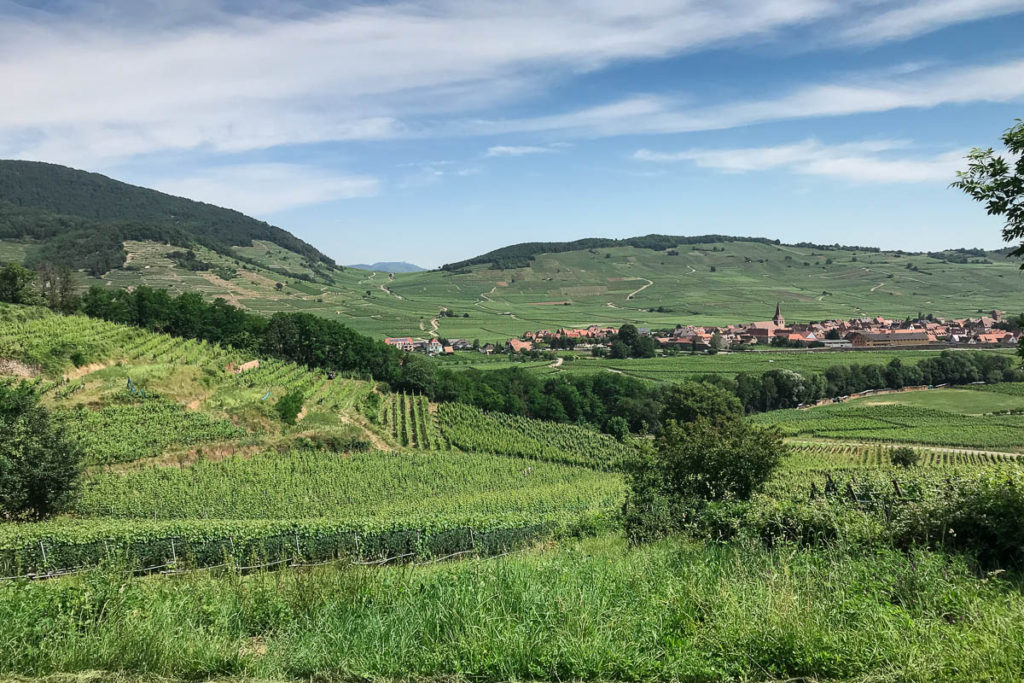
The views could easily have been scenes from movies and reminded Ian of a similar hike taken in the Alsace 20 years ago It would be easy to spend a few days taking a bus to one village, hiking to a second village, and returning to Colmar by bus. Enjoying the scenery and wineries along the way.
Knowing nothing about the various wineries, we just chose one at random. Marcel Lichtle Fils looked inviting, as though it were just someone’s house. Turns out it was! After going around the back and up a few stairs, we knocked on the door, which was answered by a woman who invited us in. It appeared we had entered the downstairs of someone’s home.
More Wine
We joined two French-speaking couples from Brittany. The six of us sat around a small table in a small office/tasting room as the proprietor offered us wines of our choice to taste. After the others completed a rather large order, we continued our tasting. When we decided on and paid for our purchase, our host (who fortunately spoke some English) took us to the basement of the house. The wine cellar, of course! Here she pulled our bottles, boxed them for us, and sent us on our way. Another three bottles of wine, for 22 € total, again not very expensive. Here we got two Pinot Noirs and one Reisling.
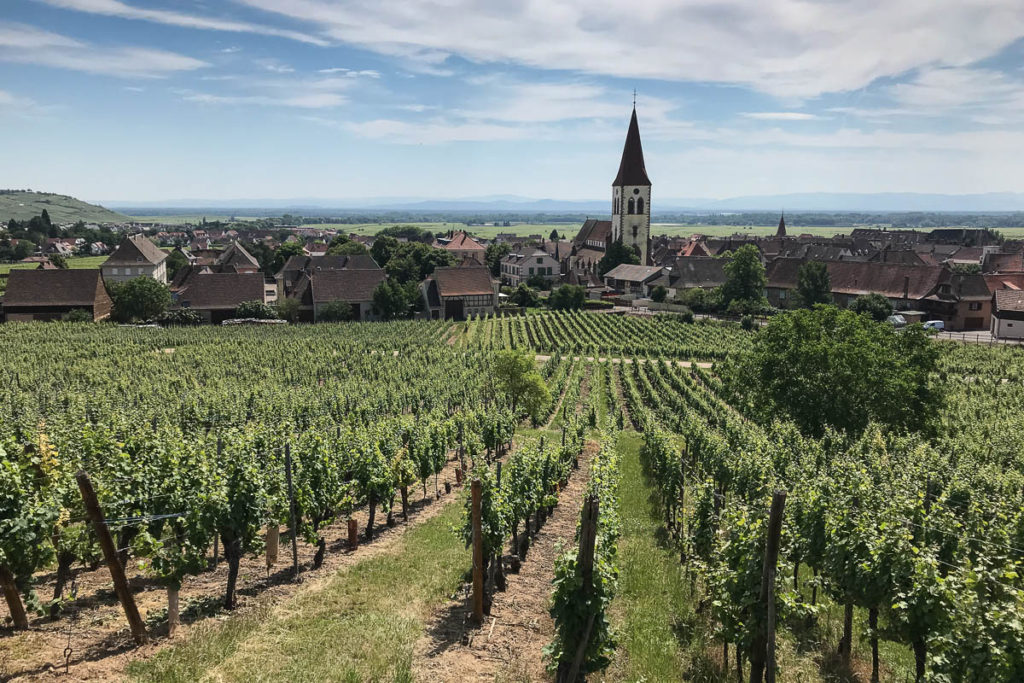
The village of Ammerschwihr had very few tourists but a lot of wineries. All the restaurants in Ammerschwihr seemed to be closed (mid June), foiling our plan of having lunch in this village. After walking farther than we needed to in the opposite direction of the nearest bus stop, to a bus stop with no shade and no bench, we waited about half an hour for the bus that returned two very hungry people to Colmar. But no complaints, we had just spent yet another special day.
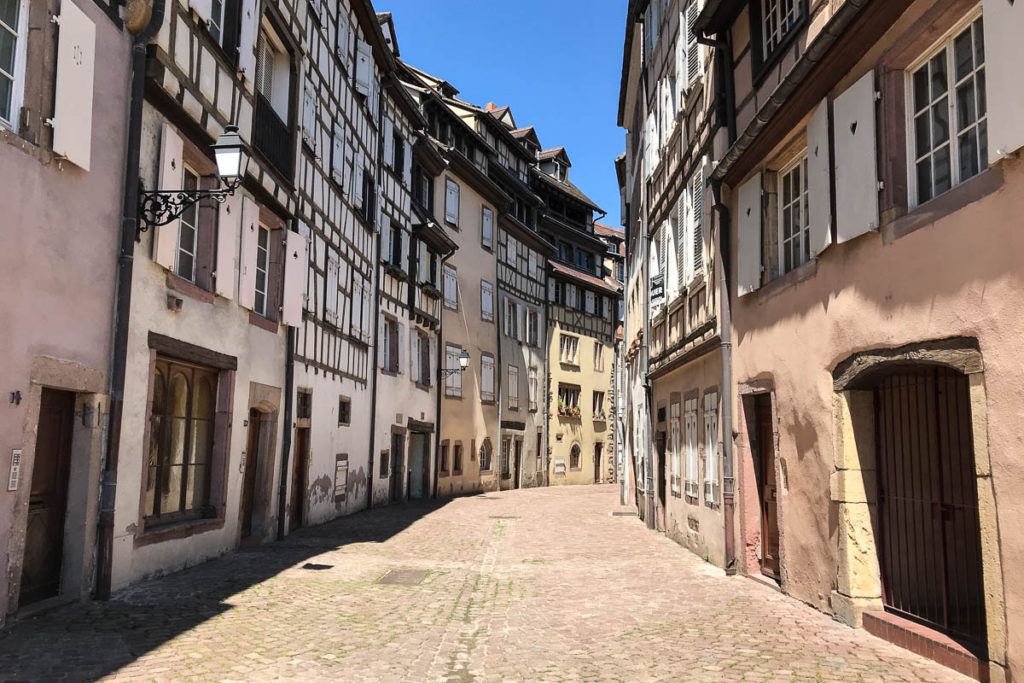
Day Trip to Strasbourg
The train from Colmar to Strasbourg took only 30 minutes, making for an easy day trip. Strasbourg is a large and busy city. It’s where the EU Parliament meets, although their offices are in Brussels; its train station has 13 tracks.
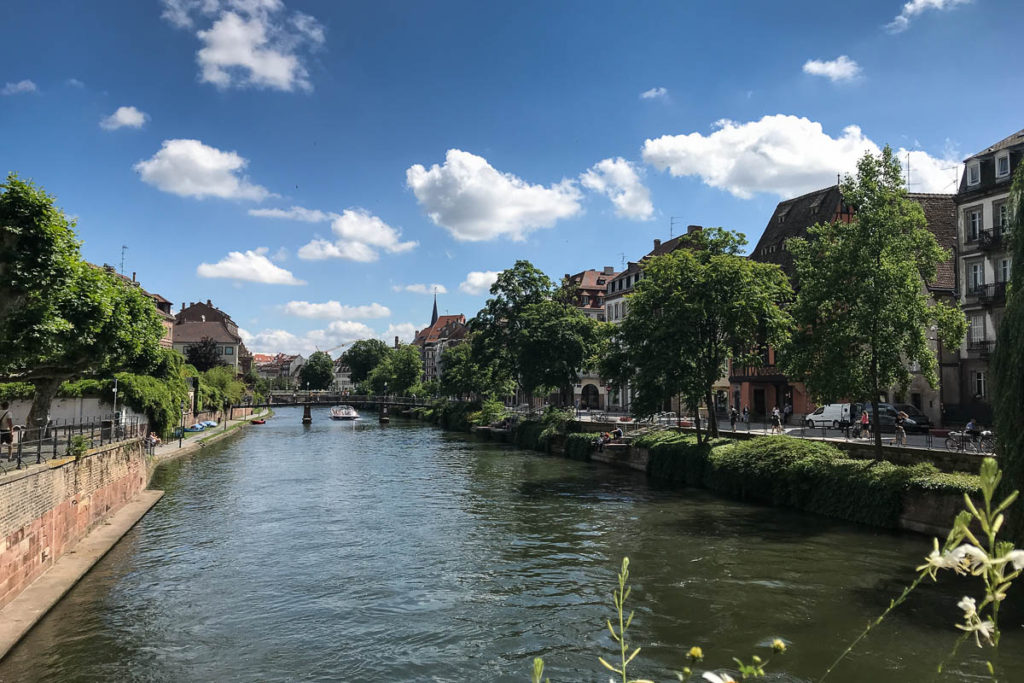
Cathédralel de Notre-Dame de Strasbourg
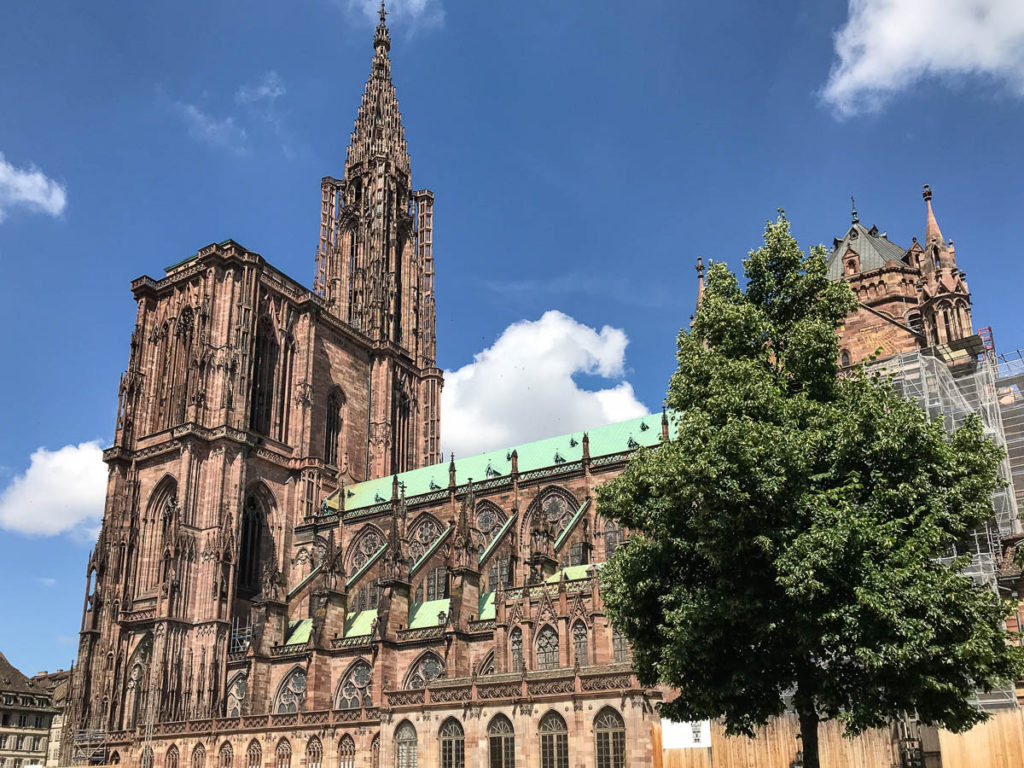
The main tourist attraction in this city is its massive Cathédralel de Notre-Dame de Strasbourg (Cathedral of Our Lady of Strasbourg). Built during the 13th and 14th centuries, this Gothic style church made of red sandstone replaced the Romanesque church which burned in 1176.
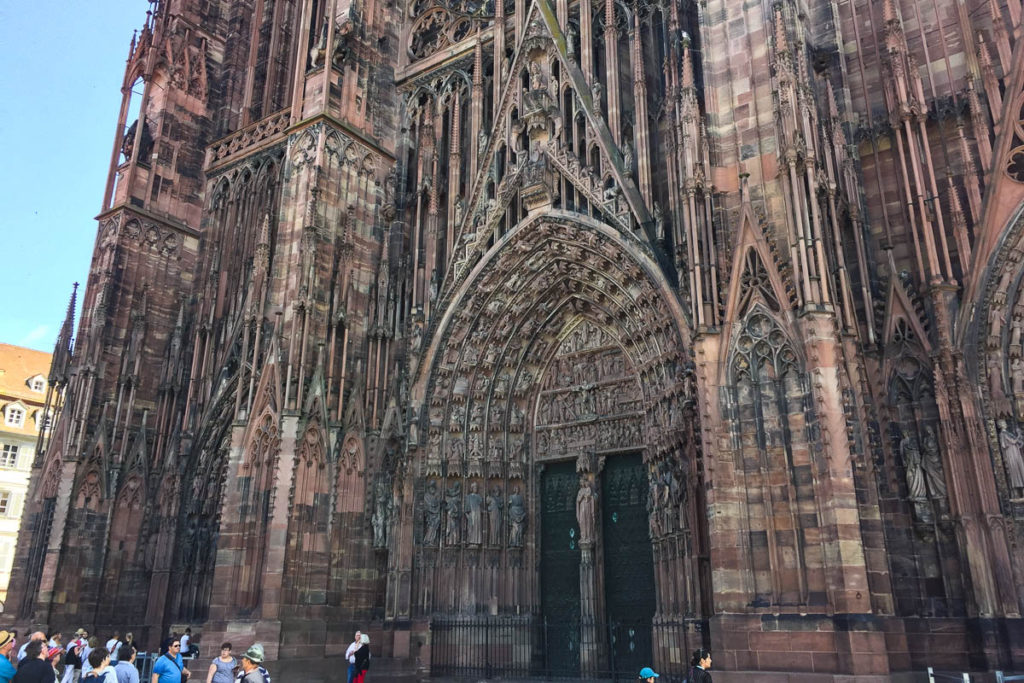
We visited this cathedral, with no entry fee, relatively early in the day on a weekday in June. It was quite crowded, including several tour groups. However, the single file line moved quickly through a narrow entrance with security guards.
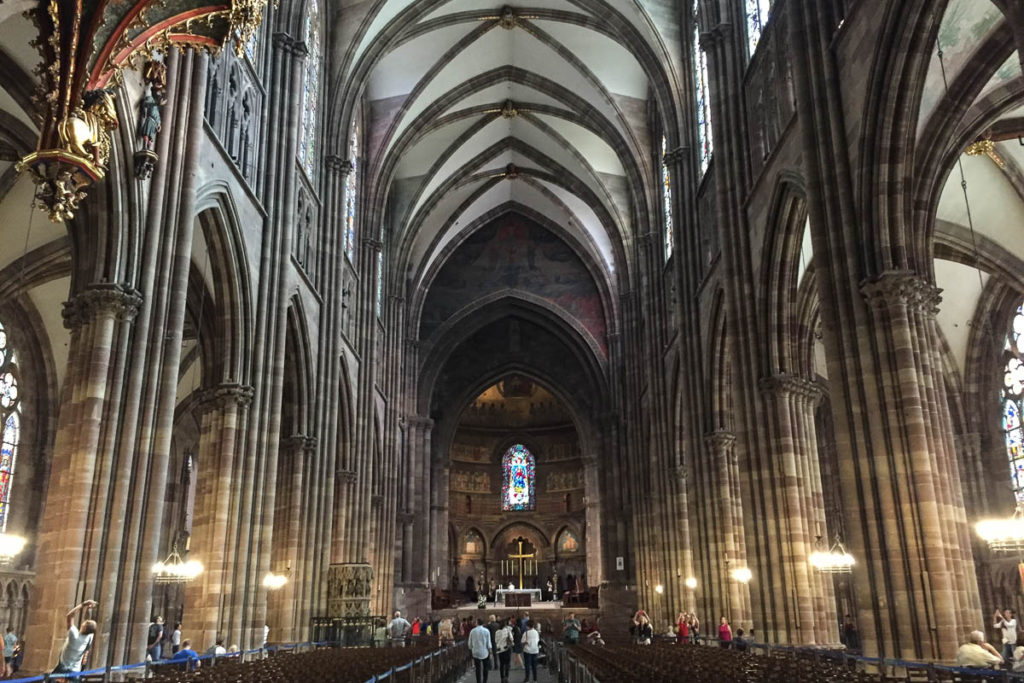
Despite the crowds, the interior was equally impressive, with stained glass windows, the majority of which are original from the 12th to 15th centuries. Inside, one can also view an intricate astronomical clock, dating from the 1500’s, which presents a very small show every 15 minutes. Cute, but a nonevent compared to the astronomical clock in the center of Prague.
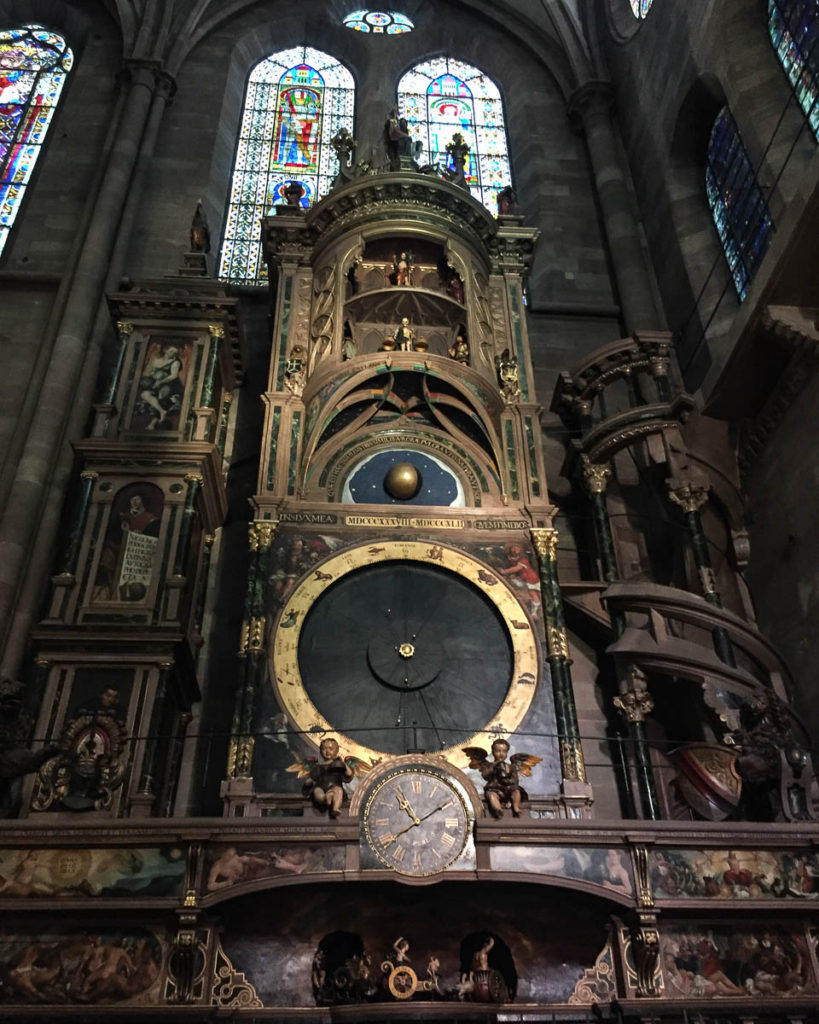
Petite France
The Ill River, a tributary of the Rhine, runs through the historic center of Strasbourg. We ambled along its banks, both at street level and below, admiring the various architecture of the houses and other buildings. On the way to Petite France, the river is split into canals with weirs, a lock, and a swing bridge.
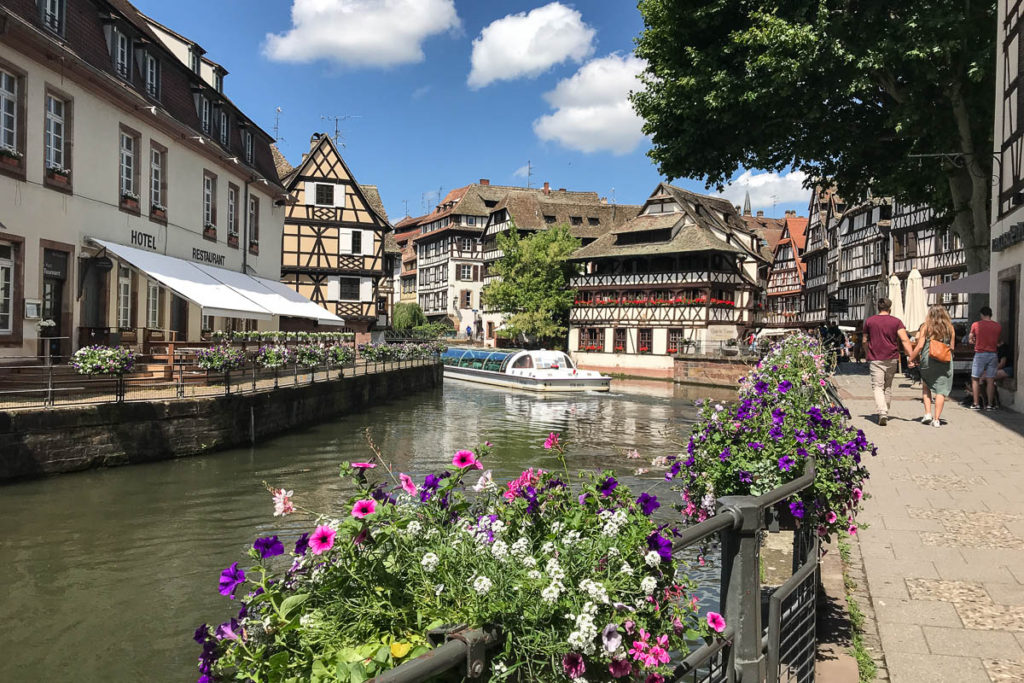
Strasbourg’s Petite France, although crowded with tourists (maybe some locals too?), is still quaint. We walked a few blocks away from its center and found a restaurant a bit off the beaten path for lunch. It even had a slightly less expensive menu for 19 €, which included appetizer, main course, and ¼ liter of wine each. Bonus: the options included some of the regional food specialties we’d been wanting to try…specifics a bit later.
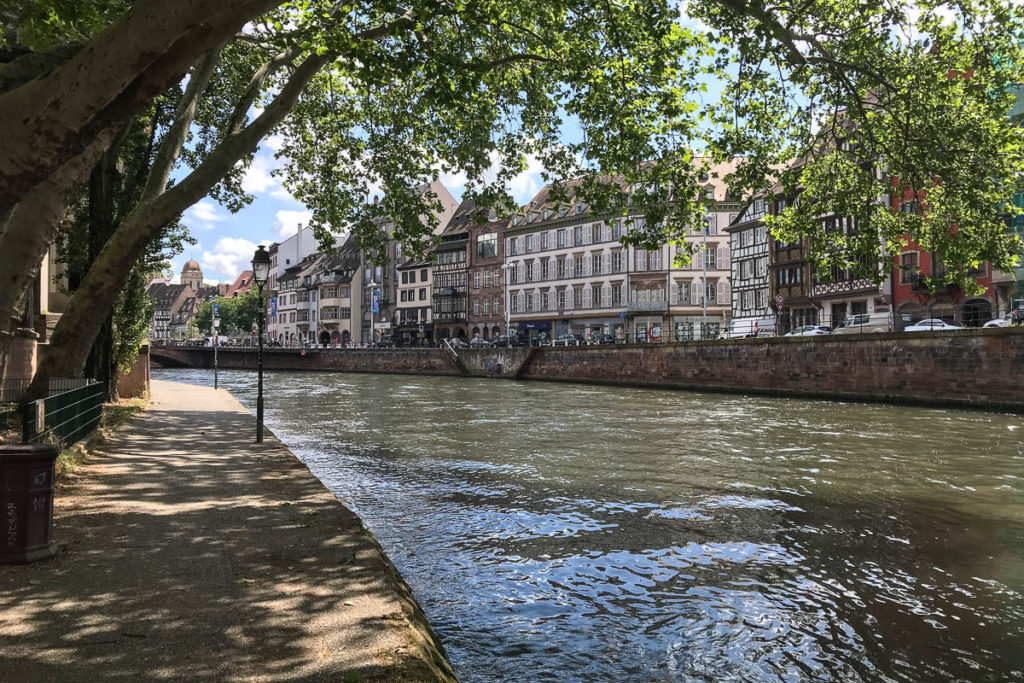
Our Unexpected Expensive Purchase
As we were wandering slowly through the city until it was time for our train back to Colmar, Ian was lured by a shop selling regional specialties of the sweet variety. We entered to see huge hunks of several varieties of both nougat and fruit cake. Ann usually can’t see prices without her reading glasses so wasn’t really paying much attention. We (mostly Ian) selected one flavor of fruit cake and one flavor of nougat. We had the shop assistant cut a smallish slice of each.
As expected, both were sold by weight. Guess we didn’t realize quite how heavy these delicacies could be. The bill: 56,04 € ($62.62)! Luckily, we had enough cash (barely a total of 60 €, we already had our return train tickets) with us after paying for lunch. We weren’t carrying a credit card with us, a habit that began when we started long-term travelling, no way to get our cards replaced if they got stolen or compromised. We savored these treats for about two weeks. Unfortunately, they added a bit of weight to Ian’s suitcase while traveling to our next two destinations.
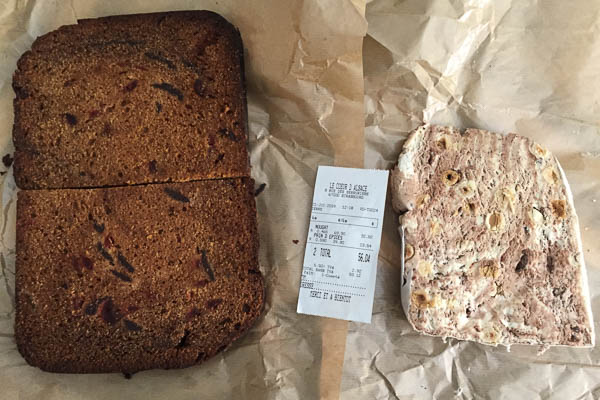
Regional Food Specialties
Choucroute is probably one of the better-known food specialties of this region. Basically the Alsatian version of sauerkraut, it is usually served as choucroute garnie, fermented cabbage with a few potatoes and a selection of pork products. Several varieties are served at once, including any of the following: thick slices of bacon, other smoked and salted pork, often two or three different types of sausages. Calling all carnivores!

Another local specialty is tarte flambée. No, it’s not a dessert; we think of it as Alsatian pizza. The traditional version is rolled dough with fromage blanc or crème fraiche, onion, and lardons (bacon). But like pizza, creative varieties abound.

A traditional sweet food is kugelhopf, a sponge cake baked with raisins, almonds, and cherry brandy. We tried a sample as we walked by a shop. Although we liked it, neither of us were big fans. We found other pastries that appealed to us more. Besides, we had some extravagant fruit cake and nougat back at the apartment.
For lunch that day in Strasbourg, we both ordered choucroute garnie for our main course. Ian tried the tarte flambée for his first course, while Ann chose pâté, a slightly healthier appetizer. A couple days later, we tried the two traditional versions of arte flambée side by side for a light dinner in Colmar. We found all quite tasty.
Alsace Wrap-Up
We very much enjoyed our time in Colmar and surrounds and are glad we went. However, Alsace doesn’t make the cut as an area that we might consider spending an extended period of time for a few reasons. Too many tourists, okay for nine days but it would get tiring for a couple of months. We both, especially Ian, were having significant allergic reactions to something. Plus, the weather can get hot during the summer, as we experienced on our last few days.
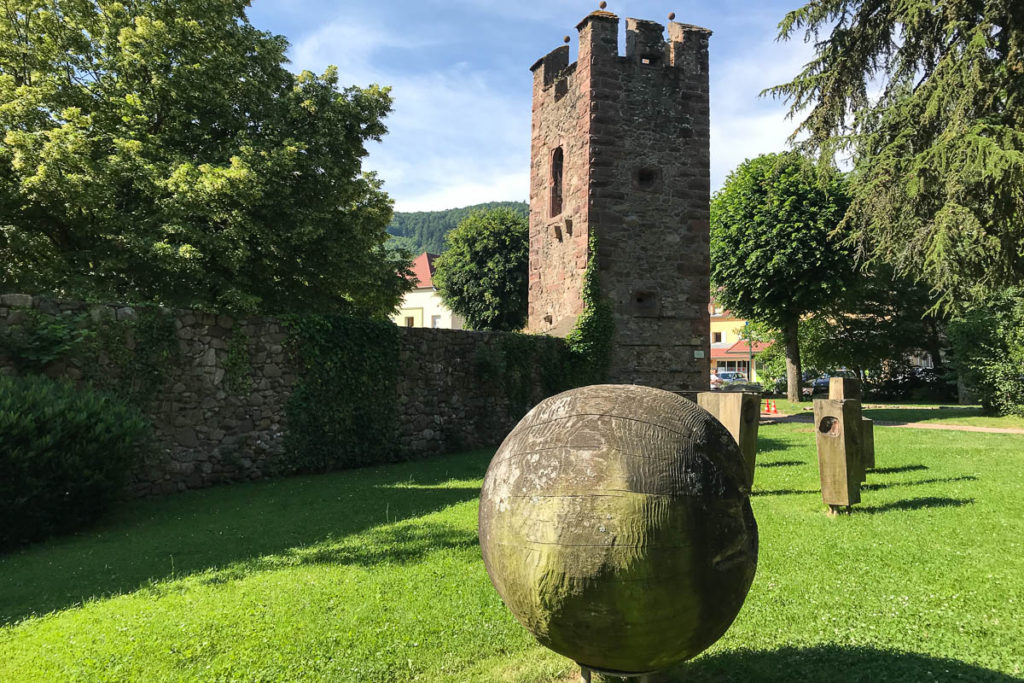
Next Up: Lyon in France’s Auvergne-Rhône-Alpes Region (during one of western Europe’s heat waves)
Ian and Ann

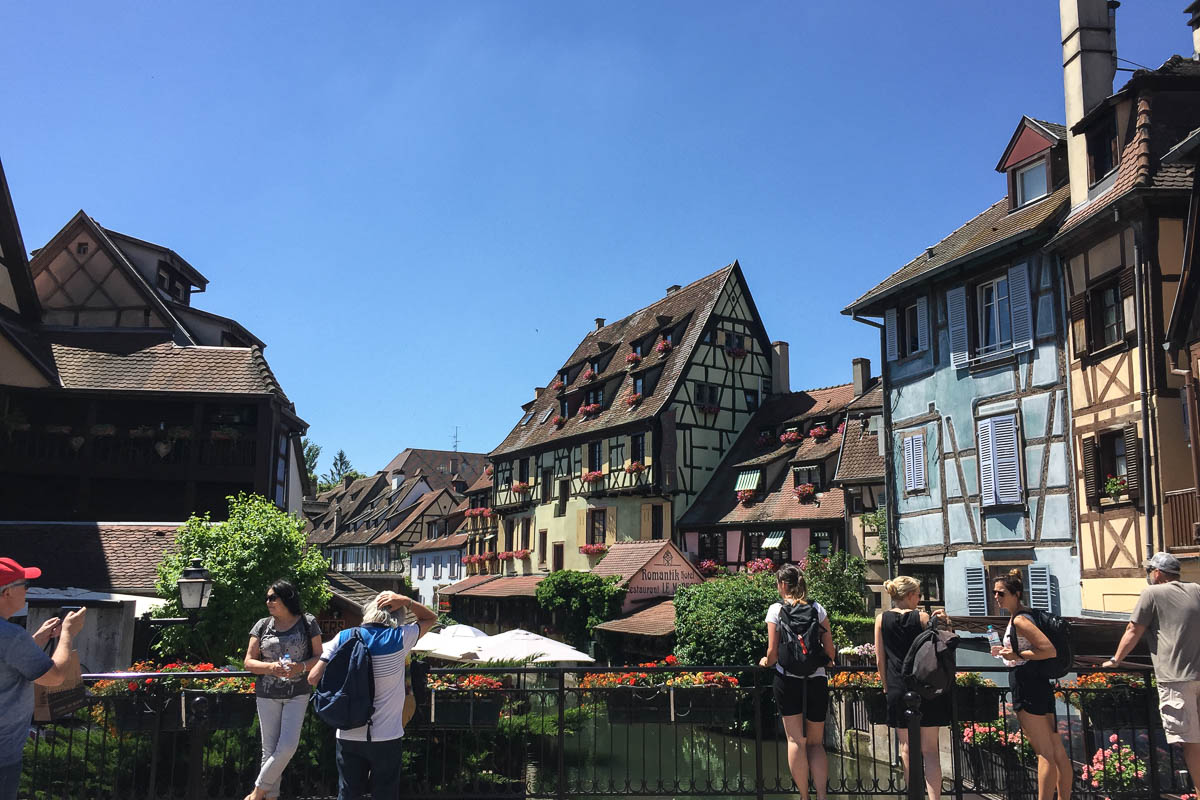
6 Comments
WOW! YOUR PICTURES JUST GET MORE EXCEPTIONAL WITH EVERY POST. WHAT A GORGEOUS, HISTORICAL AREA OF THE WORLD. THANK YOU FOR SHARING.
Thanks, Karen! The Alsace region certainly is photogenic!
Ian and Ann
Splendid photography – almost like being there.
Thanks, Art! Happy to help you experience travel through our photos.
Ian and Ann
Beautiful! I wish I could go there.
Hi Ellie,
We think you would really like it.
Ian and Ann